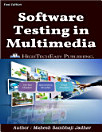Geographic Information Science: Third International Conference, GI Science 2004 Adelphi, MD, USA, October 20-23, 2004 Proceedings
Max J. Egenhofer · Christian Freksa · Harvey J. Miller
2005. g. janv. · Springer
E-grāmata
348
Lappuses
reportAtsauksmes un vērtējumi nav pārbaudīti. Uzzināt vairāk
Par šo e-grāmatu
This section gives a description of notions used throughout this study. Current achievements in developing action-centered ontologies are also discussed. 2.1 Ontologies In the context of information extraction and retrieval, different kinds of ontologies can be distinguished [15]: • Top-level ontologies describe very general concepts like space and time, not depending on a particular domain, • Domain ontologies and task ontologies describe the vocabulary related to a generic domain or kind of task, detailing the terms used in the top-level ontology, • Application ontologies describe the concepts that depend on the particular domain and task within a specific activity. Several investigations have been conducted to bring actions (tasks) to bear on - tologies. Among them are Chandrasekaran et al. [6] and Mizoguchi et al. [23] in the fields of AI and Knowledge Engineering. For the geospatial domain, Kuhn [21] and Raubal and Kuhn [26] have attempted to support human actions in ontologies for transportation. Acknowledging the importance of human actions in the geographic domain, a research workshop was held in 2002, bringing together experts from diff- ent disciplines to share the knowledge and work on this issue [1]. Camara [5], one of the workshop participants, has proposed that action-driven spatial ontologies are formed via category theory, for the case of emergency action plans.
Novērtējiet šo e-grāmatu
Izsakiet savu viedokli!
Informācija lasīšanai
Viedtālruņi un planšetdatori
Instalējiet lietotni Google Play grāmatas Android ierīcēm un iPad planšetdatoriem/iPhone tālruņiem. Lietotne tiks automātiski sinhronizēta ar jūsu kontu un ļaus lasīt saturu tiešsaistē vai bezsaistē neatkarīgi no jūsu atrašanās vietas.
Klēpjdatori un galddatori
Varat klausīties pakalpojumā Google Play iegādātās audiogrāmatas, izmantojot datora tīmekļa pārlūkprogrammu.
E-lasītāji un citas ierīces
Lai lasītu grāmatas tādās elektroniskās tintes ierīcēs kā Kobo e-lasītāji, nepieciešams lejupielādēt failu un pārsūtīt to uz savu ierīci. Izpildiet palīdzības centrā sniegtos detalizētos norādījumus, lai pārsūtītu failus uz atbalstītiem e-lasītājiem.








